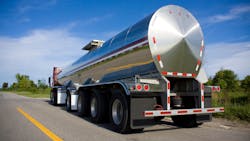Fleets’ parts and labor expenses finally fell during the second quarter of this year, according to recently released data from the latest North American Service Event Benchmark Report compiled by the American Trucking Associations’ Technology & Maintenance Council and Decisiv.
“With rising build rates for new equipment and less mileage reducing the need to operate aging trucks, fleets are finally seeing a definite improvement in parts and labor costs,” Dick Hyatt, Decisiv president and CEO, said in a news release. “The data that Decisiv collects and analyzes for TMC on Vehicle Maintenance Reporting Standard [VMRS] system level codes points to a return to normalized trade cycles and more predictable service and repair costs.”
After an extended period of cost increases, the combined parts and labor costs for the top 25 VMRS codes fell 1.3% in the second quarter from the first. Labor costs decreased for the first time in the past year and parts costs were down for the second quarter in a row. On a year-over-year basis, combined parts and labor costs rose only 5.57% in Q2 compared with the same period last year, which is far slower than the 15% increase in costs seen in 2022.
“After many months of rapidly increasing parts and labor costs, we are pleased to see this positive trend in the maintenance expense data,” said Robert Braswell, TMC executive director. “The council’s fleet membership will benefit from this important parts and labor cost analysis and plan accordingly going forward.”
While economic and inflation pressures are still driving parts prices and labor rates to comparatively high levels, OEMs are effectively managing fewer supply chain disruptions that have negatively impacted production capacity, report organizers said. With the steady elimination of pent-up demand, fleets are finally taking delivery of new, less repair-intensive trucks. Additionally, the influx of replacement vehicles and lower freight volumes are decreasing the demand for service and repair activity, consequently lowering parts and labor costs.
The data reflecting lower parts and labor expenses in this quarter’s benchmark report indicates how several factors interactively impact service activity. Changes in mileage related to freight volumes, the effect of newer vs. aging trucks, and the ongoing stabilization of the supply chain all impact each other and have a resulting effect on fleet service operations.
Looking ahead, there is a growing expectation that service and repair costs will find a new equilibrium and settle into a more predictable cycle in line with past results.
Data on the top 10 VMRS code categories shows that engines and related systems accounted for the largest percentage of all costs in the second quarter. In total, powerplant (35.9%), exhaust (12.9%) cooling (6.1%) and fuel systems (5.3%) equaled 60.2% of costs during the quarter.
Decisiv/TMC benchmark reports are generated using data from Decisiv’s SRM platform on service and repair events for more than 7 million commercial assets operating across the U.S. and Canada. The asset service management system is being used to manage a weekly average of 70,000 service events at nearly 5,000 locations.
